Prøve GULL - Gratis
Ewe Nutrition For Optimal Lamb Production
Stockfarm
|August 2020
Sheep producers are often heard complaining about ewes that produce thick and sticky, slow-flowing colostrum, with a subsequent negative effect on lambs. Several studies indicate that this problem can be directly attributed to poor nutrition during late gestation.

In an article titled ‘Colostrum production in ewes: A review of regulatory mechanisms and of energy supply’ by Banchero et al., published in Animal in 2015, the authors point out that lamb losses in extensive production systems can largely be attributed to colostrum availability. Colostrum production, in turn, is directly dependent on the nutrition that ewes receive in the last weeks prior to lambing.
The energy requirements of ewes expecting multiplets are significantly higher than those carrying single lambs. The problem is exacerbated by the fact that these ewes simply do not have enough space in their rumen to ingest sufficient roughage to meet their energy requirements.
Grazing alone is therefore insufficient in meeting these ewes’ requirements and an energy supplement in the last week of gestation is essential. The extra energy ensures better colostrum production and makes the colostrum more fluid, thus promoting ingestion.
Nutrition for colostrum production
According to the authors, the majority of energy-rich grains tend to increase colostrum production by between 90 and 185%. They concluded that short-term supplementation of energy-rich grains is therefore a cost-effective way of managing ewes under extensive grazing conditions and limiting lamb losses.
They caution, though, that adequate protein intake is just as vital, seeing as over or underfeeding protein can affect the amount of colostrum produced at birth.
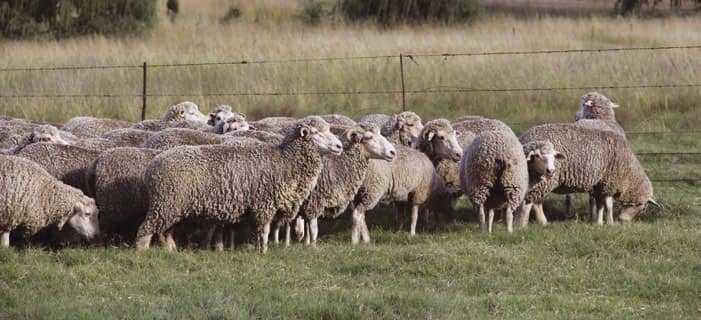
Nutrition during late gestation
Denne historien er fra August 2020-utgaven av Stockfarm.
Abonner på Magzter GOLD for å få tilgang til tusenvis av kuraterte premiumhistorier og over 9000 magasiner og aviser.
Allerede abonnent? Logg på
FLERE HISTORIER FRA Stockfarm
Stockfarm
Trust and muffins lead the way
In any business, communicating in silos is the main cause of issues among managers. With only three of us managing things, myself on sheep, Gert on vehicles and Mbali on payments, breaking through our silos is easy. Twice a week we hold short morning meetings to report progress and problems towards our goal of turning grass into sheep for profit.
2 mins
December 2025
Stockfarm
Santa's new team
Last December, we warned Santa Claus of the perils of visiting South Africa with his team of reindeer. We cautioned him about the biological hazards his reindeer might bring into the country, and the import tariff issues he might encounter when trying to bring in all those gifts. We also elaborated on the heat and other environmental challenges his team might face. But we also told him about our friendly farmers and the braais he might be invited to, complete with a beverage of his choice.
3 mins
December 2025
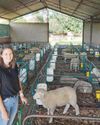
Stockfarm
The effect of iucerne hay quaiiiy on feedlot lambs
Lucerne hay is one of the most widely used roughage sources for ruminant diets, largely due to its reputation for providing high-quality nutrition. Important considerations for producers who use lucerne hay in their feed programme include assessing the true value of lucerne hay, determining the most suitable grade for specific feeding purposes, considering its cost, and balancing these factors against optimal feedlot performance.
3 mins
December 2025
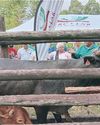
Stockfarm
Imfuyo-yami Ingumcebo Wami: Livestock as a legacy of wealth and wisdom
In the heart of KwaZulu-Natal, under the warm sun and the watchful gaze of the rolling hills, the Hlawini Community Hall in Umfolozi Local Municipality came alive with the spirit of unity, learning, and tradition. The occasion? The Umfolozi Livestock Farmers' Information Day, held under the banner of the Agricultural Research Council's (ARC) Kaonafatso ya Dikgomo (KyD) project, a national an initiative aimed at empowering communal livestock farmers through knowledge, technology, and sustainable practices.
3 mins
December 2025
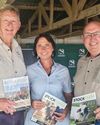
Stockfarm
Celebrating the 2025 Komga Agricultural Show
This year's Komga Agricultural Show, energised by the arrival of summer and filled with festive stalls, was a hive of activity. The grounds came alive with live music, a poultry exhibition, the familiar sounds of cattle and sheep in the pens, displays of horsemanship, and top-quality technology and implements on show.
2 mins
December 2025
Stockfarm
DSA reaches new milestone on the road to excellence
The Dairy Standard Agency (DSA) has enjoyed an exceptional 2025 so far, marking two major achievements that underscore its ongoing pursuit of excellence.
3 mins
December 2025
Stockfarm
Samic: Protector of red meat quality
If you thought the South African Meat Industry Company (Samic) is just about carcass competitions, think again. Fact is, the company plays a pivotal role in South Africa's meat supply chain, upholding rigorous standards of quality, safety, and transparency from the farm gate to the plate.
3 mins
December 2025
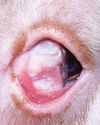
Stockfarm
Wireworm management in small stock
Years of indiscriminate dosing have eliminated weaker wireworms, allowing resistant populations to dominate and spread through flocks. Wireworms typically hatch following good rains and warm nights. When larvae move up the green grass, they are ingested by grazing sheep. About 20 days later, the worms begin sucking blood, leading to anaemia and, in severe cases, death.
2 mins
December 2025

Stockfarm
Back to basics at the 2025 LRF Stockman School
The 17th Annual LRF Stockman School, hosted by the Livestock Registering Federation (LRF), kicked off with great enthusiasm at the Aldam Holiday Resort and Conference Centre in the Free State. Held over three days, the event brought together leading experts from a range of fields who met everyone's expectations by addressing relevant and timely topics head-on.
7 mins
December 2025
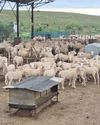
Stockfarm
Vertical gains in the lambing pen: It's not just about the numbers
In a world where rising input costs and increasing consumer demands play a decisive role, it has become more important than ever for red meat producers to raise lambs that not only benefit the producer but also add value throughout the entire supply chain.
4 mins
December 2025
Translate
Change font size

